Aššur-uballiṭ I
Aššur-uballiṭ I (1363-1328 BC) is the seventy-third ruler of Ashur, according to
the Assyrian
King List [/riao/kinglists/assyriankinglist/assyriankinglist/index.html], and is generally recognized as the founder of
the Middle Assyrian territorial state (Cancik-Kirschbaum 2003,
Postgate 2011, Lion 2011), although this assumption should be
re-evaluated against more recent archaeological discoveries that point
at an earlier stage, during the second-millennium process after which the
Middle Assyrian kingdom emerged (see, introduction
to the period of Mittanian hegemony and the introduction
to Puzur-Aššur III). Similarly, the creation of the first group of
Assyrian provinces, traditionally attributed to this ruler is
plausible, but not sustained by any actual evidence (Llop 2011).
It remains certain Aššur-uballiṭ's contribution to the end of Mittani
in the Near Eastern political landscape, as he is known for having
supported Šuttarna III, Šattiwaza's rival to the throne. He is also
known for having written two letters to the Egyptian pharaoh (El
Amrana letters EA 15-16), in the second of which he calls himself a "brother" of his, in this
way claiming the new, raising position of Ashur among the other great powers of the time, Kassite Babylonia, the Hittites, and Egypt.
Aššur-uballiṭ possibly conquered all or part of Arrapha (Maidman
2011). He was son of Erība-Adad I (1380-1354 BC) and father of
Enlil-nārārī (1317-1308 BC), and from the reading of the Synchronic
History (I 8'-12'; see also Chronicle P I 5-14) we know that he
married his daughter Muballiṭat-Šerua to the Babylonian
king. Afterwards, when his grandson was deposed and killed during a
rebellion, he intervened in Babylon and installed Kurigalzu II
(1332-1308 BC) as new king.
Overveiw of the inscriptions
There are seven royal inscriptions from the reign of Aššur-uballiṭ
– all excavated in Ashur and all recording building enterprises – and
two inscriptions of uncertain attribution (1001-2). No. 1001 comes from Nineveh and
although extremely fragmentary, is believed to be recording the
restoration of the temple of Ištar in Nineveh. This assumption is
based on the existence of four inscriptions of later Assyrian rulers,
all celebrating Aššur-uballiṭ's work on the temple. The inscriptions
are those of later rulers Shalmaneser [/riao/ria2/shalmaneseri/index.html] I (5 [/riao/ria2/Q005793/]: 26,
31; 17 [/riao/ria2/Q005805/]: 7, 9-10) Tiglath-pileser [/riao/ria3/tiglathpileseri/index.html] I (12 [/riao/ria3/Q005937/]: 26') and Ashurnasirpal [/riao/ria4/index.html] II (56 [/riao/ria4/Q004510/]: 14)
Aššur-uballiṭ's incriptions are the first in which the phrase "Land of
Aššur" (māt Aššur) appears, and an interest on the preservation of the royal continuous line is visible in his inscriptions no. 1 and no. 7, where long genealogies are recorded up to the reign of Puzur-Aššur III.
Selected Bibliography
Browse the RIA 1 Corpus [/riao/ria1/pager/]
1
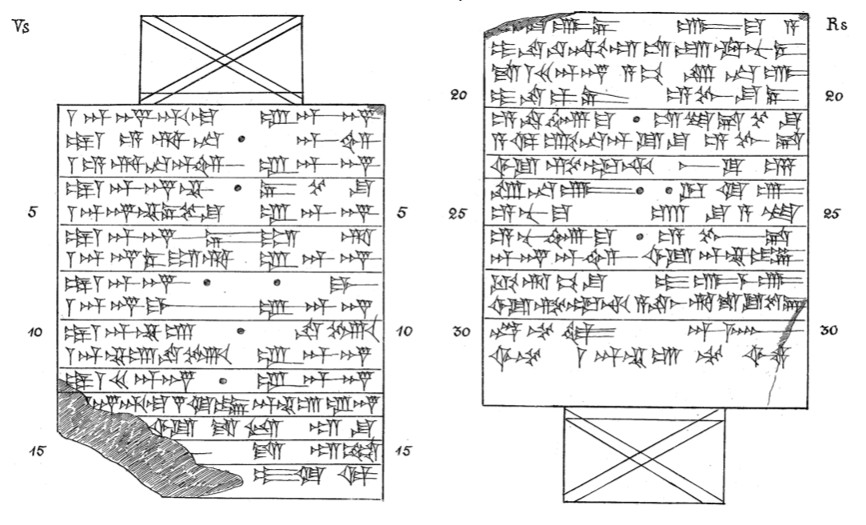
VA 05707 (Ass 13963). Schroeder, KAH 2 no. 27
A later Neo-Assyrian copy of an inscription of Aššur-uballiṭ I is inscribed on a clay amulet-shaped tablet discovered at Aššur. The text, which is now in Berlin (Vorderasiatisches Museum), records this ruler's work on a structure in the New City, probably the walls (not the palace, as previously thought, see introduction to Puzur-Aššur III). Because there are several orthographic and grammatical peculiarities, it has been suggested that the text was an ancient forgery or a badly executed later copy. This text is the earliest known Assyrian royal inscription with a date: it was written in the eponymy of Enlil-mudammiq.
Access the composite text [/riao/ria1/Q005719/] of Aššur-uballiṭ I 1.
Bibliography
2
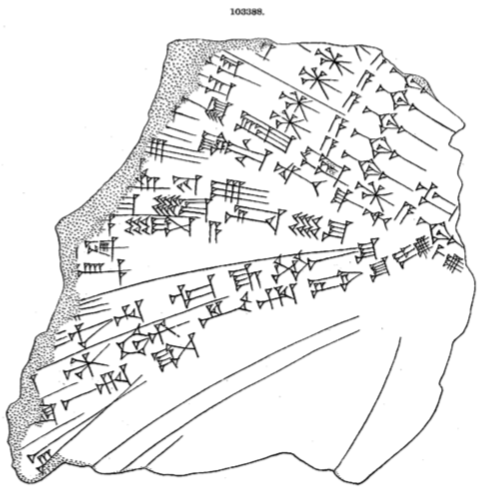
BM 103388. King, CT 32 no. VII
Two clay cones appear to preserve part of one and the same text. The damaged inscription records work on the terrace of the New Palace. These two objects of Aššur-uballiṭ I were discovered at Aššur and are presently housed in the Eski Șark Eserleri Müzesi of the Arkeoloji Müzeleri (Istanbul) and the British Museum (London).
Access the composite text [/riao/ria1/Q005720/] of Aššur-uballiṭ I 2.
Bibliography
3
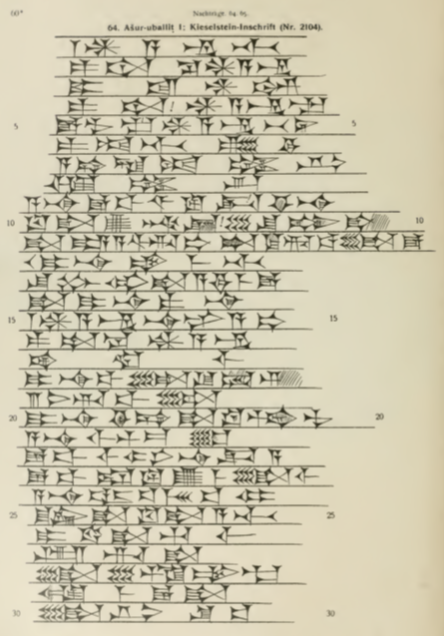
VA 05814 (Ass 02104). Messerschmidt, KAH 1 no. 64
A stone in the shape of a flint found at Aššur is inscribed with a text of stating that a well by the name of Uballiṭ-nišēšu ("It has Given Life to His People") was filled in at Aššur-uballiṭ I's request; an Aššur-nādin-aḫḫē, possibly the second ruler of that name, is named as a previous builder. The inscription also records that the king worked on the Patti-ṭuḫdi canal. ("Canal of Abundance"). The object is now in the Vorderasiatisches Museum (Berlin).
Access the composite text [/riao/ria1/Q005721/] of Aššur-uballiṭ I 3.
Bibliography
4
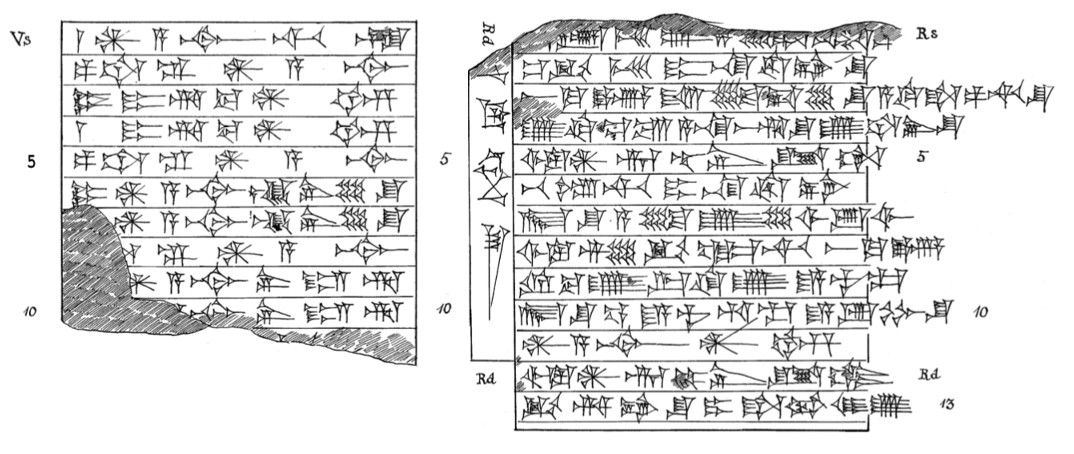
VAT 09554 (Ass 20456). Schroeder, KAH 2 no. 28
A fragmentarily preserved clay tablet discovered in the Ištar temple at Aššur bears an inscription of Aššur-uballiṭ I recording renovations to the Ištar-kudnittu (reading uncertain) shrine in that city. The tablet is housed in the Vorderasiatisches Museum (Berlin).
Access the composite text [/riao/ria1/Q005722/] of Aššur-uballiṭ I 4.
Bibliography
5
A small fragment of a clay cone from Aššur preserves a few lines of an inscription of Aššur-uballiṭ I. It appears to commemorate work on a courtyard of a temple. The piece is now in the Eski Șark Eserleri Müzesi of the Arkeoloji Müzeleri (Istanbul).
Access the composite text [/riao/ria1/Q005723/] of Aššur-uballiṭ I 5.
Bibliography
6
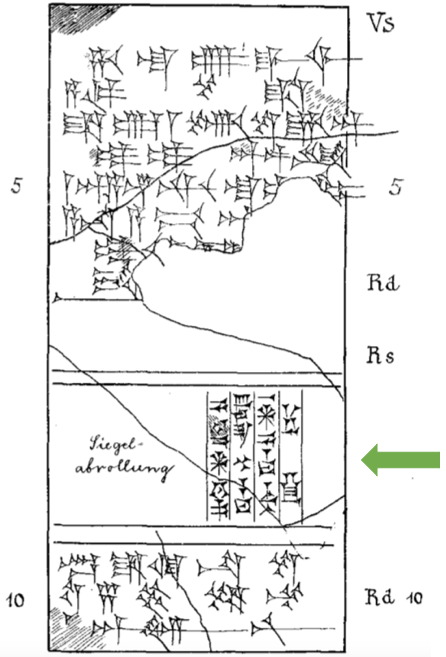
VAT 08995 (Ass 14446cy). Schroeder, KAV no. 210
The text of Aššur-uballiṭ I's royal seal is known from impressions on three clay tablets, all of which come from Aššur and are presently in Berlin (Vorderasiatisches Museum).
Access the composite text [/riao/ria1/Q005724/] of Aššur-uballiṭ I 6.
Bibliography
7
A proprietary label of Aššur-uballiṭ I is inscribed on the rims of two clay jars excavated at Aššur. The present whereabouts of both pieces are not known.
Access the composite text [/riao/ria1/Q005725/] of Aššur-uballiṭ I 7.
Bibliography
1001
Several four-sided basalt objects discovered at Nineveh and now in the British Museum (London) may be inscribed with one and the same inscription recording construction on the Ištar temple in that city; Samsī-Addu I is mentioned as a previous builder. The attribution to Aššur-uballiṭ I is based on script and on the fact that Shalmaneser I [/riao/ria2/shalmaneseri/index.html] states that he had work on the Ištar temple at Nineveh; see Shalmaneser I 01 [/riao/ria2/Q005789/].
Access the composite text [/riao/ria1/Q005726/] of Aššur-uballiṭ I 1001.
Bibliography
1002
Part of an inscription of an Assyrian king, likely Aššur-uballiṭ I, is preserved on a clay cone fragment from Aššur. The extant text appears to describe Aššur-uballiṭ's work on the New Palace; the text is similar to Aššur-uballiṭ I 2. The piece is currently in Berlin (Vorderasiatisches Museum). Aššur-nādin-aḫḫē, possibly the second ruler of that name, is mentioned as a previous builder of the palace.
Access the composite text [/riao/ria1/Q005727/] of Aššur-uballiṭ I 1002.
Bibliography
Nathan Morello
Nathan Morello, 'Aššur-uballiṭ I', RIA 1: Inscriptions from the Origins of Assyria to Arik-dīn-ili, The RIA Project, 2023 [http://oracc.org/kingdomofassyria/ashuruballiti/]